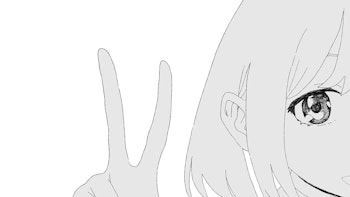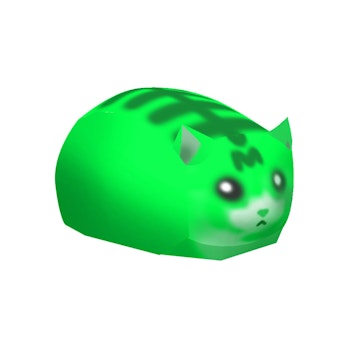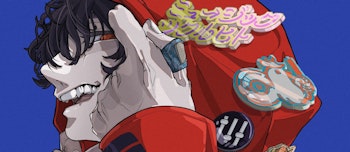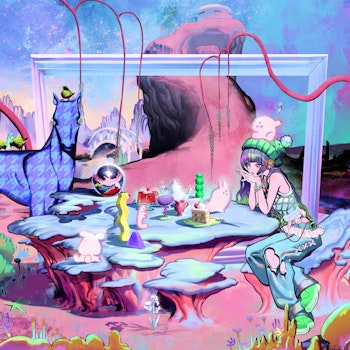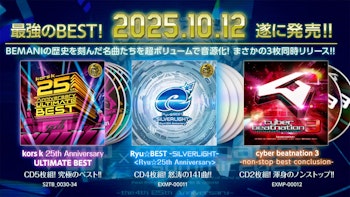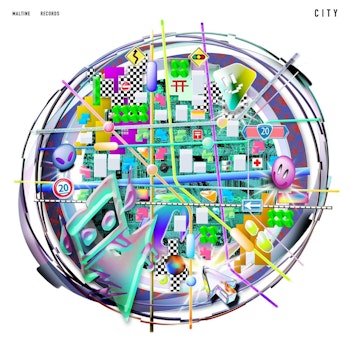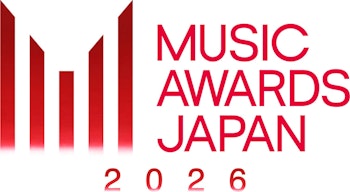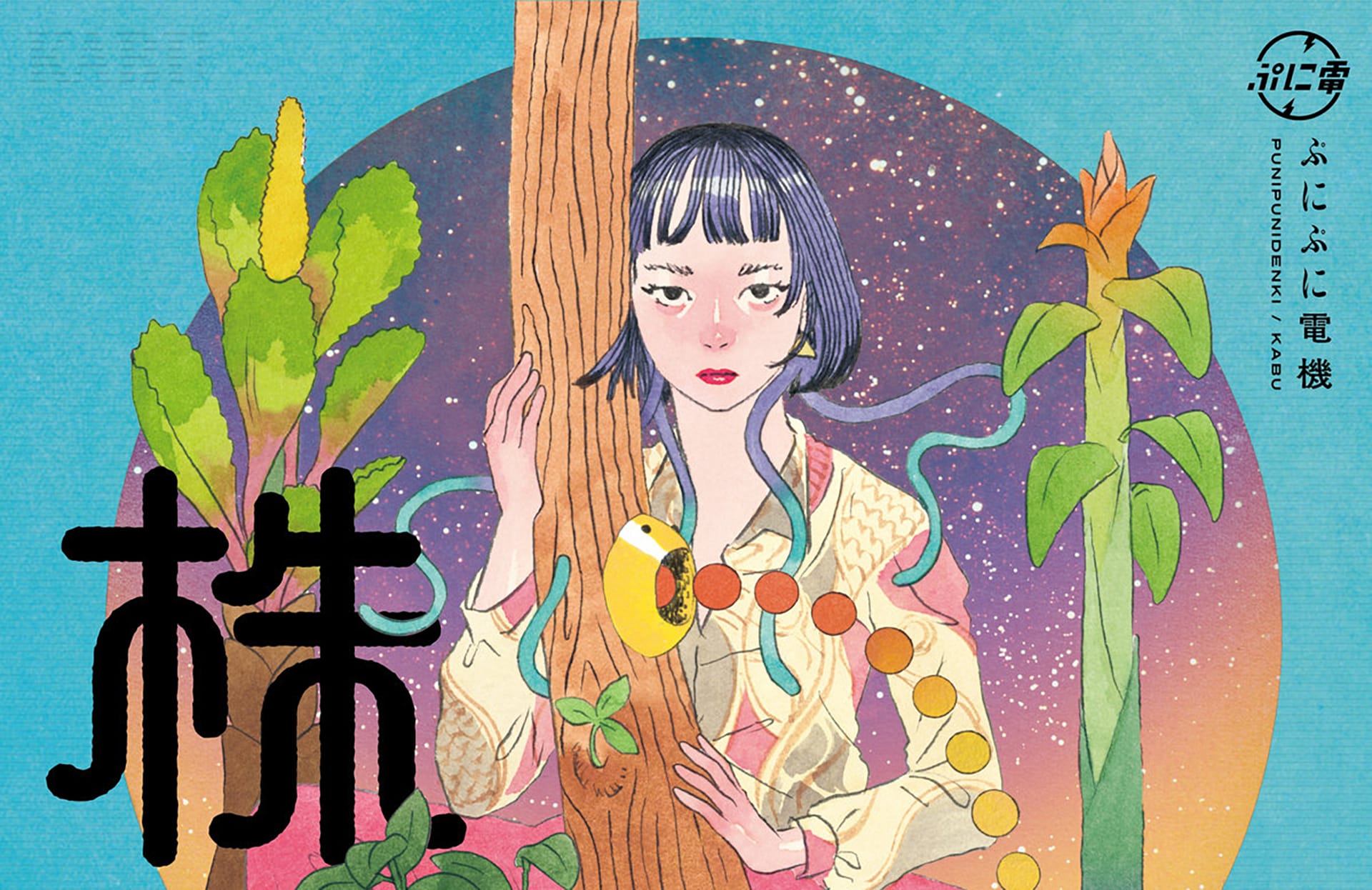
Japanese musician punipunidenki has long felt like an “internet artist.” Their output came via SoundCloud uploads, Bandcamp offerings and YouTube videos. Beyond where their songs appeared, punipunidenki reflected the ethos of a web-leaning creative. Their songs zip between styles — they can be creating nervy electro-pop in one instance, before turning to mellow funk or jazzy meditations the next.
Yet this week, punipunidenki shares a very physical-world-geared offering. Their second album Kabu arrives on Oct. 22, as a CD. It's available for purchase via Bandcamp if you're not able to purchase from Japanese retailers.
“I’ve always liked physical objects. It’s like Gunpla (Gundam plastic model kits),” punipunidenki tells scrmbl over Zoom a couple weeks before Kabu comes out. “The anime ends after one arc, but by having the plastic model you keep remembering Gundam. I make ‘things’ with that spirit.”
Fittingly, Kabu collects the prolific artists digital releases over the last three years, which include collaborations with domestic creators such as Kan Sano, Shin Sakiura and Mikeneko Homeless among others, plus several works made with international names such as Sweden-based Pikes and American Paul Grant. It’s a physical testament to their creative mindspace in recent times, giving permanence to a creator working on the often transient internet.
scrmbl caught up with punipunidenki — deep into following the MLB playoffs, despite their Boston Red Sox having just been eliminated, now rooting for the Toronto Blue Jays owing to a friend's allegiance — to talk about Kabu, working with other artists and capitalism. It has been edited for length and clarity.
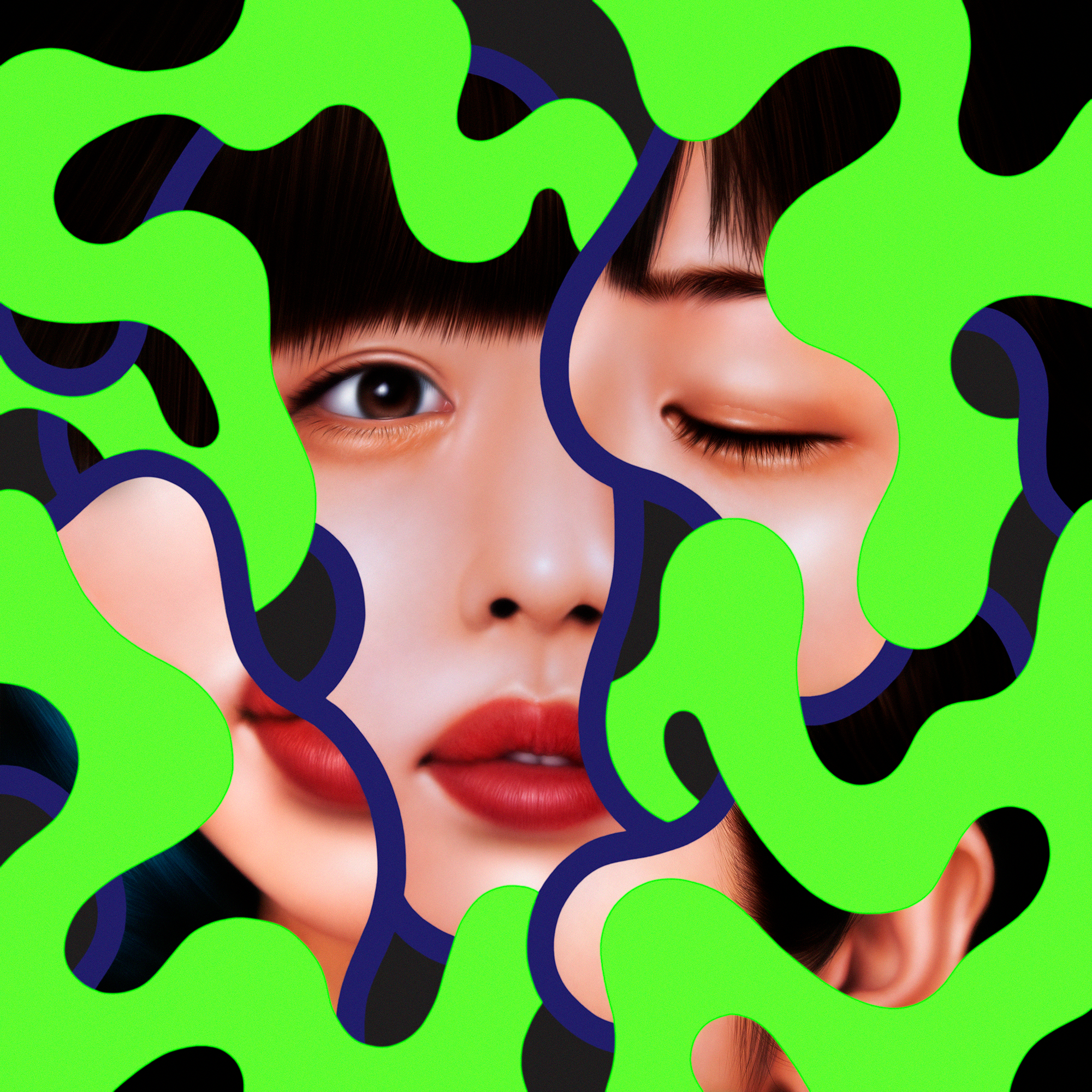
scrmbl: How has 2025 been for you overall? We’re almost at the end of the year — what have been some of your favorite memories?
punipunidenki: This year I went to Scandinavia for writing sessions, and I stayed the longest in Stockholm, Sweden. Those memories stand out the most. It was really inspiring.
I’ve never been…what is it like, and what about it draws you in?
I’ve been interested in Nordic culture for a long time. At first I was most into Denmark. I studied Danish, and watched Danish dramas. Two years ago I stayed in three countries — Norway, Sweden and Denmark — and this year I went back to the same three. I spent the most time in Stockholm because I’ve signed with a distributor there, Snafu Records, and went mainly to develop songs with them.
Since it was my second time out there, I started to really sense the differences among the three countries, maybe like how people from Europe or the U.S. learn the differences between South Korea, China and Japan. They’re totally different. Stockholm felt very business-oriented to me — the city in general and also in music. It felt like a business hub for the Nordics.
As for studios, my friend, the musician Pikes, lives in Stockholm, and I produced and recorded at his studio. It’s in a very cool place — an apartment building that’s essentially for artists. On the first and second floors you’ll find, say, a scriptwriter creating dramas, an oil painter… artists from different disciplines using the building. It’s small, but very cool. I’d meet people over coffee, like a gallerist, or someone writing a script, and chat. I don’t think there are many such creative spaces in Japan. I loved it.
I want to talk about the new album, Kabu. It features a lot of songs featuring collaborations. How did you choose the artists to work with?
I’m not sure if this is good or bad, but with the weak yen, lots of artists from different countries have been visiting Tokyo. Music publishers, companies that work with labels to develop copyrights, have been contacting me more and more these past few years. Companies like Sony Music Publishing or Fujipacific Music. They often make introductions. “There’s an overseas trackmaker in town — want to collaborate?” I think the album grew out of doing many of those. It’s less that I went out scouting; publishers often approached me.
Is that how you met Pikes?
That was through a publisher, Sony I think. I was in Japan working on a co-write with someone else via their publisher. I told the Sony publishing rep who happened to be there, “I’m going to the U.K. and the Nordic — could I do co-writes over there?” He contacted the European side and sent me a list of writers and artists. Pikes was on it, and I’d already been following him even before seeing the list. I was like, “Wow, if I can collaborate with Pikes, please make it happen.”
Kabu gathers the digital singles you’ve released over the past three years. How did you decide what to include — what’s your process for putting it together?
In Japan there’s this idea of a “best-of” album. Not a concept album, but a collection. I can probably only make albums like that right now, compiling the digital singles I’ve released over the last three years. I always wanted to make a second album eventually. As I kept releasing new singles, songs piled up, and I wanted to gather them like a portfolio. Once I had around eight or nine singles out, I thought, “Okay, maybe it’s time to release an album.”
I’ve often thought of you as an “internet artist” — Bandcamp EPs, standalone digital singles. So it’s interesting when you put out a physical album on CD. What does releasing something tangible mean to you?
I’ve always liked physical objects. It’s like Gunpla. The anime ends after one arc, but by having the plastic model you keep remembering Gundam. I make “things” with that spirit.
Uploading data to the internet and making objects in the real world are very different, but the processes share a lot in common. Like choosing materials, or deciding on design. Through physical making, you notice things; music that was just floating online “gets a body.” That transformation feels almost mystical to me. I really love that work.
Do you remember the first time you bought or experienced a CD?
I do! The first CD I was given was a Studio Ghibli vocal selection — songs like “Carrying You” and “My Neighbor Totoro.” My parents gave it to me at my birthday party, and I basically abandoned the party to play it in my room and sing along. [laughs]
Where did the title Kabu come from?
Japanese is fascinating. Many words with the same pronunciation have multiple meanings. “Kabu” most commonly makes people think of “stock” or “shares” in capitalistic terms — and that meaning is included here. My name, punipunidenki, sounds a bit like a company, so one meaning is: “You can hold stock in punipunidenki.”
“Kabu” is also the counter for rooted plants. I loved the contrast between “stock shares,” a symbol of capitalism, and a plant that puts down roots and grows organically in the earth. Holding both images at once felt very “punipunidenki,” so I chose it. And honestly, when I do shows or radio for the album, I just want to ask the audience, “do you have punipunidenki stock?” [laughs]
It has been three years since the first collection. Has your approach to creating or recording in general changed over that time?
In the most primitive phase, like making demos, nothing has changed much. But the processes of arranging and releasing have changed a lot. More people know about punipunidenki now, and companies such as the publishers we discussed have become more involved over the last three years. Through that I met incredible performers I wouldn’t have encountered just online — pianists, guitarists — people with real physical power and talent. That’s had a big impact on my production.
Especially the song “Umi Wo.” I wrote it with an artist named Sara Wakui , who’s truly extraordinary. The greatest talent I’ve met. For that one I asked players to handle the main instruments: guitar by Gensuke Kanki, bass by Marty Holoubek, and drums by Shunsuke Uehara. It became a song powered by live instruments and performers, something I wasn’t very focused on before. That’s a major change for me.
Any other session memories from making these songs that really stuck with you?
“Umi Wo” remains the most vivid. I wrote it about a year and a half. Maybe two years ago. It was so serious that I didn’t know how to release it, how to take it from my demo through a proper arrangement and present it to people. I lacked confidence. But after meeting Sara Wakui, hearing her play and going through her arrangement, I finally felt I could release it. I could bring something I’d carried inside me out into the world. That’s something I couldn’t have done before. As an artist, that song gave me the strongest sense of “I did it.”
What’s the biggest lesson about art you’ve learned from collaborating with other musicians?
I learn something every single time. Artists are human, truly human. I often use AI mastering, and understanding AI is much easier to understand than understanding humans. People are unpredictable. Someone might arrange a song far away from my original demo, while another will try to probe the image I have inside myself. Everyone has their own way of making things, their own feel. Collaboration is, in a way, a process of understanding people. It probably never ends, but there’s learning every time.
Take “Optimystique,” the song I made with Pikes. I think it’s the only track I recorded overseas. The sound and complexity he brings are not easy to pack into a song. He’s also a great vocalist who layers many tracks, more than thirty vocal takes, I think. In that sense it contrasts with “Umi Wo,” which has almost no backing vocals — basically a single lead. Recording “Optimystique” was tough, but it was fun. I just kept singing.
Whether it’s a Japanese or overseas artist, how do you break the ice and connect when working together for the first time — especially if you’re picking someone from a list?
It actually starts with both of us being on lists — like a matching app. We can only collaborate if both sides consent, and either of us is free to decline beforehand.
When I get a list, I listen to everyone’s music first. You can grasp personality from songs. It’s rare for me that meeting a person feels totally different from the impression I got from listening to their music beforehand. From their music I sense, “ah, this person is a bit cynical,” or “this one is very earnest and good.”
Our first meeting is usually when we enter the studio. We start by talking about each other’s songs — “I love this part of your track; this section is so cool”— and that usually makes us friendly. Also, there’s a company — the publisher — in the middle, so truly odd people rarely make it to me. Sorry, that’s blunt, but it’s true.
We’ve talked a lot about Kabu, but I’d be remiss if I didn’t ask about your newest song “Nijito” made with Kan Sano. For a tie-up song like that, what’s your approach?
This is actually my first anime tie-up. I’ve received offers at the prototype stage here and there, but I can’t write unless the original work connects with me. I read Koala Enikki and thought it was great, so I felt confident I could write a good song for it.
That said, the process for original songs versus anime tie-ups differ. Many people get involved in anime projects, so I had some concerns. In Japan there’s been an ongoing problem of original authors not being respected when it comes to anime or live-action adaptations of their work. More than anything, I wanted to be on the author’s side when writing.
Because the original was wonderful, I approached it simply— I read the work sincerely and wrote straight from that, almost like a shaman channeling something. As a result, it became a kind of song I normally wouldn’t write. That’s definitely thanks to the source material. I don’t usually live in such a cute world — my vibe is different — but that’s exactly why I could write it. The song overflows with kindness, tolerance and compassion.
You mentioned getting previous tie-up offers that you turned down. What makes you say no?
My first filter is whether it benefits people. If there are very problematic expressions — gendered stereotypes that still persist in Japanese society, or expressions that read as discriminatory — I’ll pass. Those elements are still stubbornly present in anime and the game industry. I’ll try as an artist to see if they can be fixed, but tie-up artists rarely have that kind of power. If I point it out and it still looks bad, I decline.
Shifting gears, what in music or the arts has caught your attention lately — in Japan or abroad?
Currently there’s the hot-button topic of Bad Bunny doing the Super Bowl halftime show. I’m very curious how that will play out. A podcast I listen to covered it recently too. We’re in a time when everything turns political, so I hope it has a positive impact, but I’m watching with great interest.
Which podcast was that? And what podcasts do you like in general?
My favorite is a series run by Mainichi Shimbun. Another is by Natsumi Takenaka, a choreographer for idol groups. She actively talks about feminism—rare in Japan’s public sphere. She does a show with novelist Asako Yuzuki and the musician Yukkyon called Y2K Shinsho, where the three of them rapidly riff about Japanese 2000s culture — it’s chaotic, with three people talking at once, but culturally meaningful. They look back at 2000s culture from today’s perspective in a casual pop way. It ran two seasons and will probably have a third, schedule permitting.
Lately I also enjoy We Just Want to Watch Reality Shows in Peace, by chelmico’s Rachel and Takenaka. They discuss romance reality shows from feminist and psychological safety perspectives. It’s very interesting.
What else are you up to today?
I’m very busy. I probably have more interviews. I’ll head out for those. I’m also way past a deadline for something, so I’ll likely be recording and doing interviews all day. And tonight we’re doing the CD assembly for Kabu ourselves. The discs and jackets were made by different companies, so we’re gathering friends at the office to assemble them — very DIY. [laughs]
To zoom out: Kabu captures the past three years of your output. In those three years, what are you most proud of, artistically or otherwise?
That’s a really interesting question. Honestly, these three years were years of endurance. Not very happy ones. As an artist I can’t help but absorb difficult social conditions, and it was tough. Maybe after Kabu is out I’ll feel proud. Hopefully the album becomes the thing I’m proudest of.
